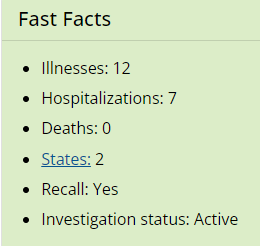Canabis: a roundup
I haven’t said much about cannabis edibles for a while, but here’s some of what’s happening.
In the UK
- An ‘historic’ moment for CBD industry as UK Gov sets legal THC limit: The UK Government has finally accepted a set legal THC limit for CBD products in an ‘historic’ move that aims to bring some legal clarity to the industry, but an expert warns there are some muddied waters yet to be cleared…. Read more
- ‘It’s imperative to recognise that not all CBD is created the same’: CBD players digest potential ‘dagger-blow to the UK industry’: In a move that has potentially far-reaching implications for the CBD industry in the UK, the Food Standards Agency has issued new precautionary advice, recommending healthy adults should limit their consumption of CBD from food to 10mg per day, down from the 70mg level recommendation set in 2020…. Read more
- UK CBD brand Trip announces ‘best week of sales ever’, despite shake-up in FSA guidance: New advice published by the UK Food Standards Agency (FSA) earlier this month recommends adults should limit their CBD consumption from food to 10mg a day. But TRIP – the company boasting the country’s top selling CBD drink – reports record sales over the last week: saying this illustrates “consumers’ confidence in superior quality CBD.” So how could the CBD drinks market shape up moving forward?… Read mor
- Industry demands closure to CBD regulation stalemate: The Association for the Cannabinoid Industry (ACI) has published a report calling on the Food Standards Agency (FSA) and the Home Office to work together to end the regulatory stalemate threatening the sector…. Read more
In the US
The New York State Office of Cannabis Management’s list of dispensaries.
New York’s Housing Works Reports $24 Million in Sales. New York City‘s first legal adult-use dispensary, Housing Works Cannabis Co. logged $24 million in sales in its first year of business. That’s a significant portion of the $137 million in sales that the New York Cannabis Control Board reported for the entire state as of early December, according to its annual 2023 report.
New flavors, formats driving cannabis-infused food and beverage products: The Jones Soda brand has its sights on new products, including a new candy launch, as national efforts mount to reclassify marijuana.
Magnolia Bakery has weed edibles now. But you can’t buy them in New York: New York City’s iconic Magnolia Bakery, which is famous for its cupcakes and banana pudding and is often the first stop for legions of tourists, announced a new lineup of THC treats on Wednesday. However, none of them will be for sale at any of Magnolia’s eight locations in the city — or anywhere in New York state, for that matter….in New York, retailers selling THC products must be licensed by the state’s Office of Cannabis Management.
Research
Cannabis-Related Disorders and Toxic Effects. N Engl J Med 2023; 389:2267-2275. DOI: 10.1056/NEJMra2212152: Heavy cannabis use has adverse effects on physical and mental health. Research is needed to better elucidate the pathophysiology of these effects and develop better treatments.
Congressional Research Service. Farm Bill Primer: Selected Hemp Industry Issues: The 2018 farm bill further directed the U.S. Department of Agriculture (USDA) to create a framework to regulate hemp cultivation under federal law and facilitate commercial cultivation, processing, marketing, and sale of hemp and hemp-derived products. USDA published its final hemp regulations in 2021. Other 2018 farm bill provisions made hemp producers eligible for federal crop insurance and agricultural research programs. Congress may consider further amendments as it debates the next farm bill.


